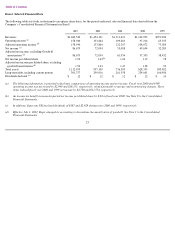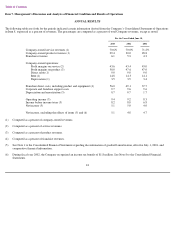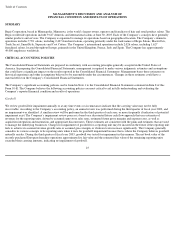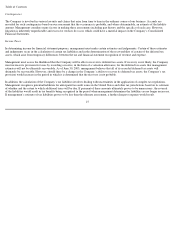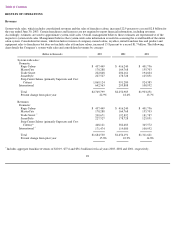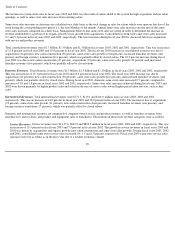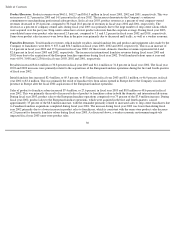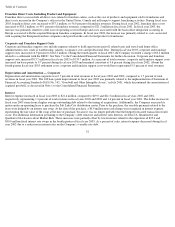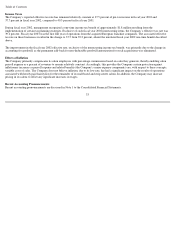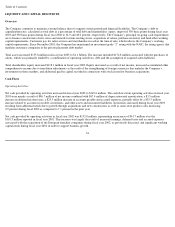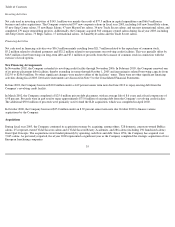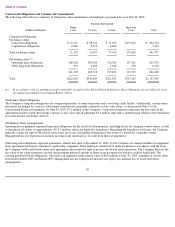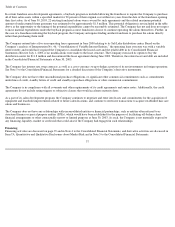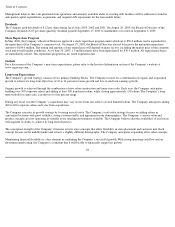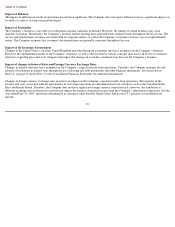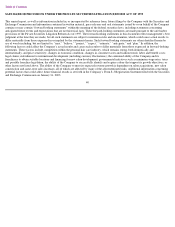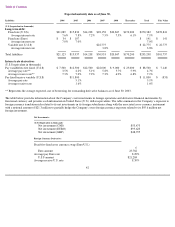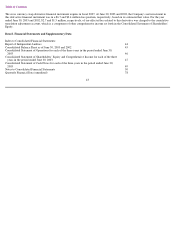Supercuts 2003 Annual Report Download - page 36
Download and view the complete annual report
Please find page 36 of the 2003 Supercuts annual report below. You can navigate through the pages in the report by either clicking on the pages listed below, or by using the keyword search tool below to find specific information within the annual report.
Table of Contents
Income Taxes
The Company’s reported effective tax rate has remained relatively constant at 37.5 percent of pre-tax income in fiscal year 2003 and
37.7 percent in fiscal year 2002, compared to 40.3 percent in fiscal year 2001.
During fiscal year 2002, management recognized a one-time income tax benefit of approximately $1.8 million resulting from the
implementation of certain tax planning strategies. Exclusive of such fiscal year 2002 nonrecurring items, the Company’s effective tax rate was
39.2 percent. Fiscal year 2003 was the first full year of operations from the acquired European franchise companies. The associated effective
tax rate on these businesses resulted in the change to 37.5 from 39.2 percent, absent the unrelated fiscal year 2002 one-time benefit described
above.
The improvement in the fiscal year 2002 effective rate, exclusive of the nonrecurring income tax benefit, was primarily due to the change in
accounting for goodwill, as the permanent add-back for non-deductible goodwill amortization for stock acquisitions was eliminated.
Effects of Inflation
The Company primarily compensates its salon employees with percentage commissions based on sales they generate, thereby enabling salon
payroll expense as a percent of revenues to remain relatively constant. Accordingly, this provides the Company certain protection against
inflationary increases as payroll expense and related benefits (the Company’s major expense components) are, with respect to these concepts,
variable costs of sales. The Company does not believe inflation, due to its low rate, has had a significant impact on the results of operations
associated with hourly paid hairstylists for the remainder of its mall based and strip center salons. In addition, the Company may increase
pricing in its salons to offset any significant increases in wages.
Recent Accounting Pronouncements
Recent accounting pronouncements are discussed in Note 1 to the Consolidated Financial Statements.
33


